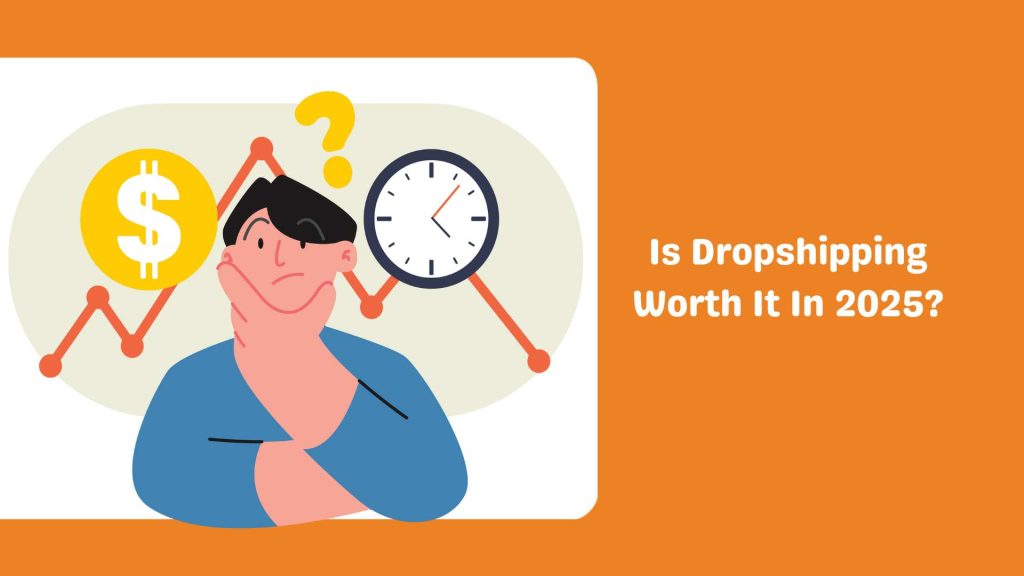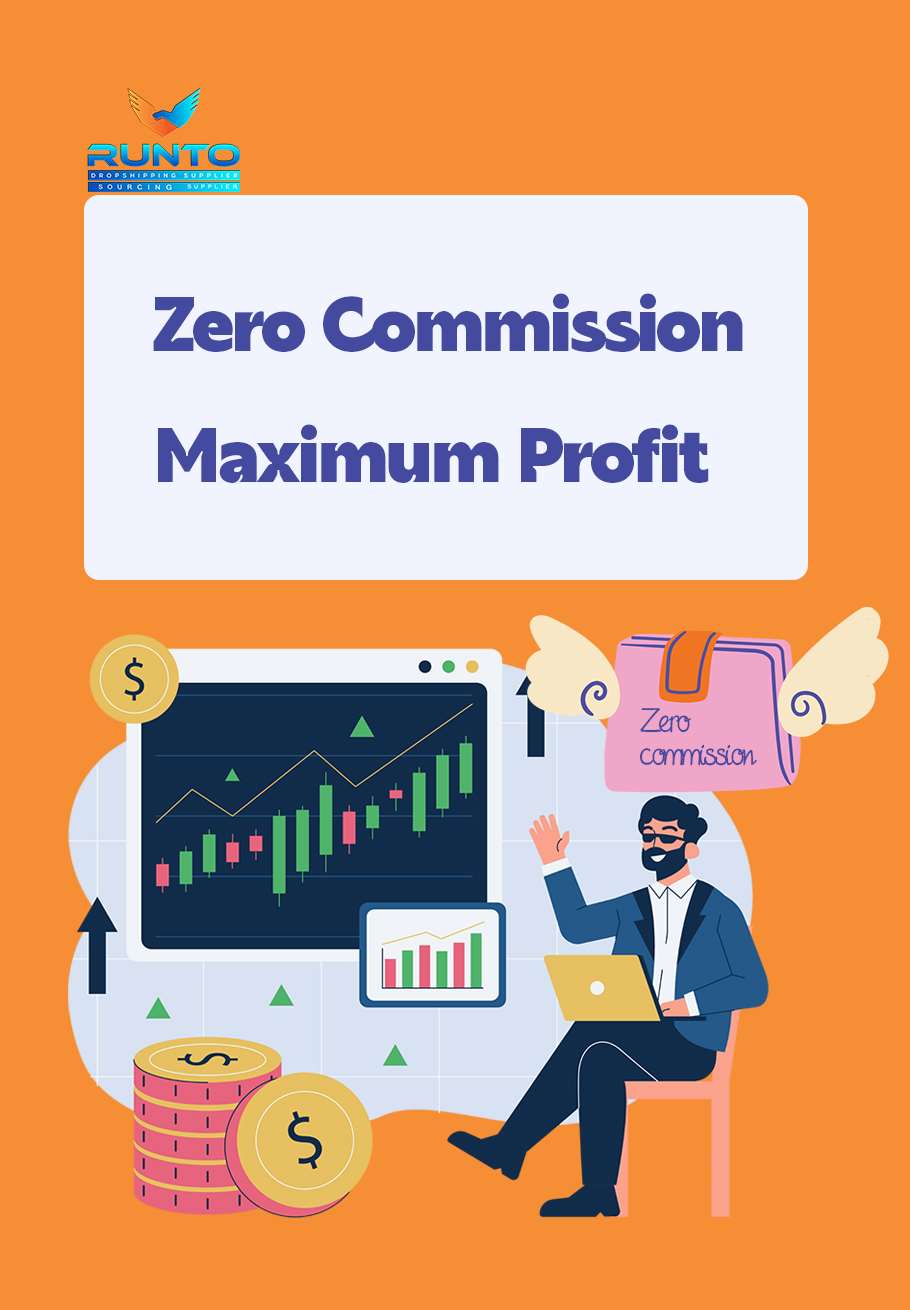In the rapidly evolving world of eCommerce, there’s a question that often arises: is dropshipping worth it in 2025? As discerning entrepreneurs look for lucrative online business models, the dropshipping model presents itself as an appealing option. Many new sellers wonder: is dropshipping profitable in 2025, or is it simply an overhyped business model in today’s saturated market?Yet, many wonder if this model can still deliver profits and viability in an increasingly competitive environment. This article navigates through key considerations and in-depth analyses on profitability, risks, tools, and long-term strategies to help you ascertain if dropshipping is, indeed, worth pursuing.
Why Is Dropshipping Worth It In 2025?
When considering whether the dropshipping business model is truly valuable in 2025, it’s essential to take stock of the current market landscape. The dropshipping business model has gained traction due to its low startup costs, flexibility, and reduced overheads. But here’s the kicker—does this mean it’s a walk in the park? While the barriers to entry are lower than traditional retail, the competition is fierce, and carving a niche can be daunting.
Moreover, the benefits extend beyond just affordability. Increased consumer acceptance of online shopping, driven by advances in technology and the global pandemic’s implications, has transformed how products are bought and sold. In light of such transformations, entrepreneurs now find it crucial to engage in thorough market research and to be adaptable to changing consumer demands. Failing to do so could lead to missed opportunities.According to Statista’s eCommerce data, online sales are expected to grow further in 2025.
Another intriguing aspect is profit potential. Entrepreneurs curious about how much can you make with dropshipping must acknowledge that earnings can vary greatly based on multiple factors. These include product selection, marketing strategies, and the effectiveness of supplier partnerships.
Here’s a snapshot of how the dropshipping model stacks up in the current eCommerce landscape:
| Key Factor | Benefits | Challenges |
|---|---|---|
| Startup Costs | Low entry barrier, minimal inventory costs | Profit margins may be lower than traditional models |
| Flexibility | Work remotely, diverse product offerings | Must manage supplier relationships and quality |
| Market Potential | Growing eCommerce acceptance | High competition necessitating unique value props |
| Profitability Potential | High profit margins are possible with optimization | Market saturation in popular niches |
As you evaluate the prospective rewards, keep in mind that success in dropshipping requires perseverance and strategic planning.
What Are The Costs Associated With Dropshipping?
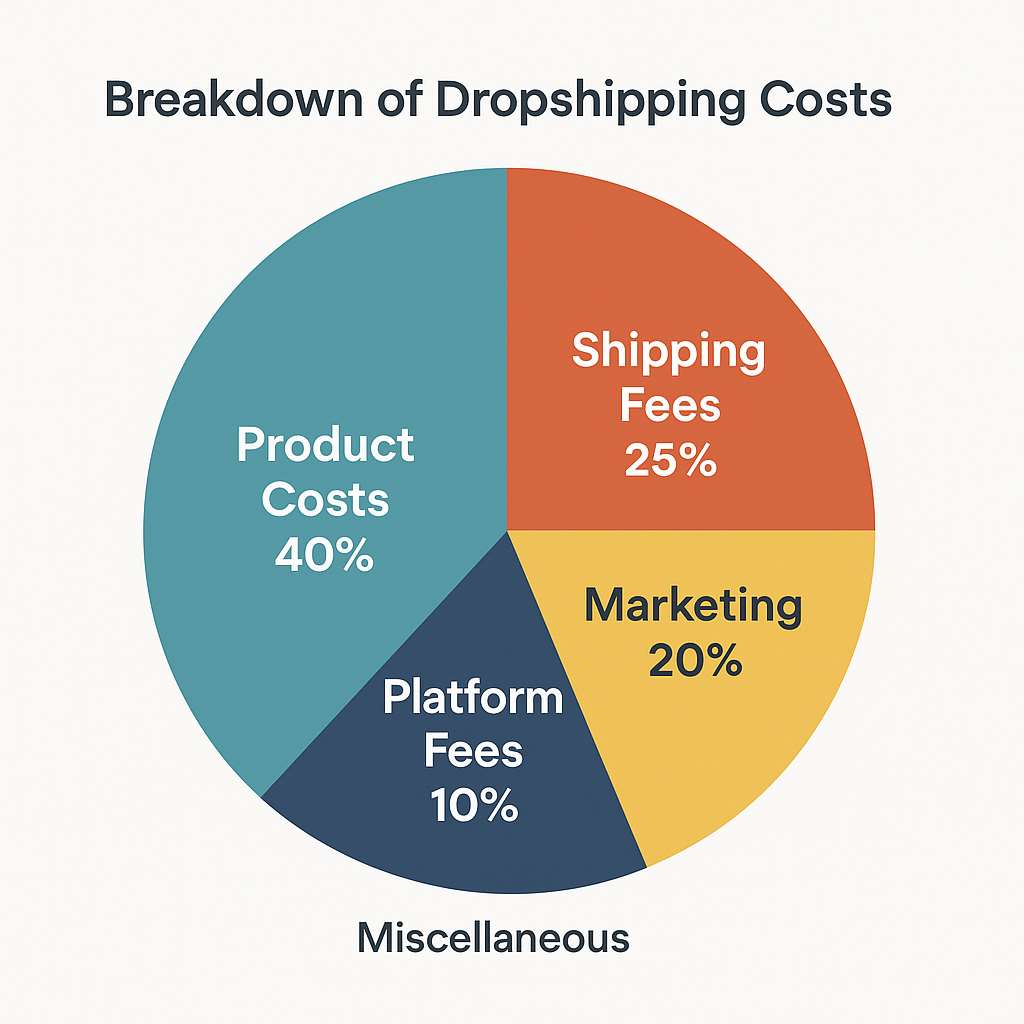
In the world of business, understanding costs is fundamental. So, let’s dive into what you really need to know: what are the costs associated with dropshipping? Contrary to what many first-timers might think, starting a dropshipping business isn’t merely about setting up a website and waiting for orders. There are various costs involved, some of which might surprise you.
First and foremost, you’ll need to factor in platform fees. If you’re using Shopify or WooCommerce, monthly subscription fees and transaction costs can add up. Next, marketing becomes essential for drawing in traffic—whether by utilizing digital marketing for dropshipping or investing in paid advertisements, understanding your customer acquisition costs is vital.
Furthermore, while one of the significant draws of dropshipping is reduced overheads, entrepreneurs still need to navigate hidden costs such as shipping fees, which can fluctuate based on supplier locations, shipping methods, and local taxes. Additionally, some suppliers may charge fees for returns, which can quickly diminish margins.Understanding how to handle shipping and logistics helps reduce hidden costs and manage customer expectations effectively.
A breakdown of potential costs in dropshipping is highlighted below:
| Cost Type | Description |
|---|---|
| Subscription Fees | Monthly fees for eCommerce platforms |
| Marketing Expenses | Costs for advertising, paid ads, and analytics tools |
| Shipping Costs | Costs incurred for delivering products to customers |
| Payment Processing Fees | Transaction fees charged by payment gateways |
| Return Handling Fees | Costs associated with managing returns |
There’s no denying that understanding these costs can help you budget effectively and design a marketing plan that caters to your margins. By embracing this knowledge, you position yourself for long-term success.
How Do Profit Margins Work In Dropshipping?
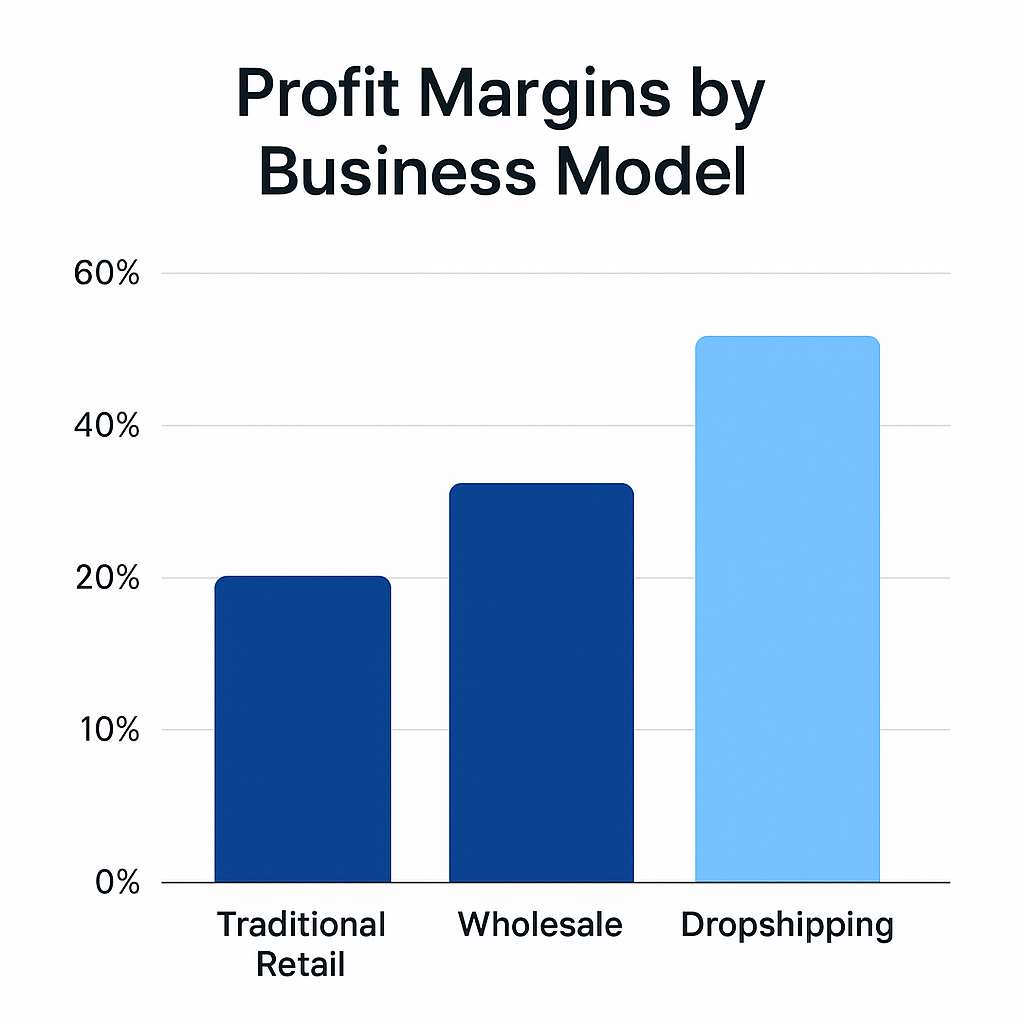
Understanding profit margins is crucial, especially in a business model that operates with thinner margins. So, the question arises: how do profit margins work in dropshipping? Typically, dropshipping profit margins hover between 15% to 45%, depending on various factors like product type, supplier pricing, and market competition. But here’s the kicker—the chosen niche can significantly impact overall profitability.
For successful dropshippers, maintaining a healthy profit margin relies heavily on a well-executed pricing strategy. This means analyzing competitors and identifying unique selling propositions. Additionally, sourcing products at competitive prices through reliable suppliers will directly influence gross income.
One often-overlooked aspect is scaling up your business. As you expand offerings, the intricacies of supplier agreements may affect costs as well. Hence, achieving economies of scale might involve negotiating better terms with suppliers or leveraging bulk purchasing down the line.
To better understand profitability in dropshipping, consider the following breakdown:
| Profitability Factor | Description |
|---|---|
| Product Selection | Certain niches have higher margins than others |
| Pricing Strategy | Competitive pricing can affect perceived value |
| Supplier Reliability | Strong partnerships can lead to better deals |
| Market Demand | High demand can increase pricing power |
| Cost Management | Effective budgeting strategies improve margins |
Ultimately, dropshipping profitability is nuanced, but diligent analysis and strategic pricing can yield rewarding outcomes.
What Tools and Platforms Are Best for Dropshipping?
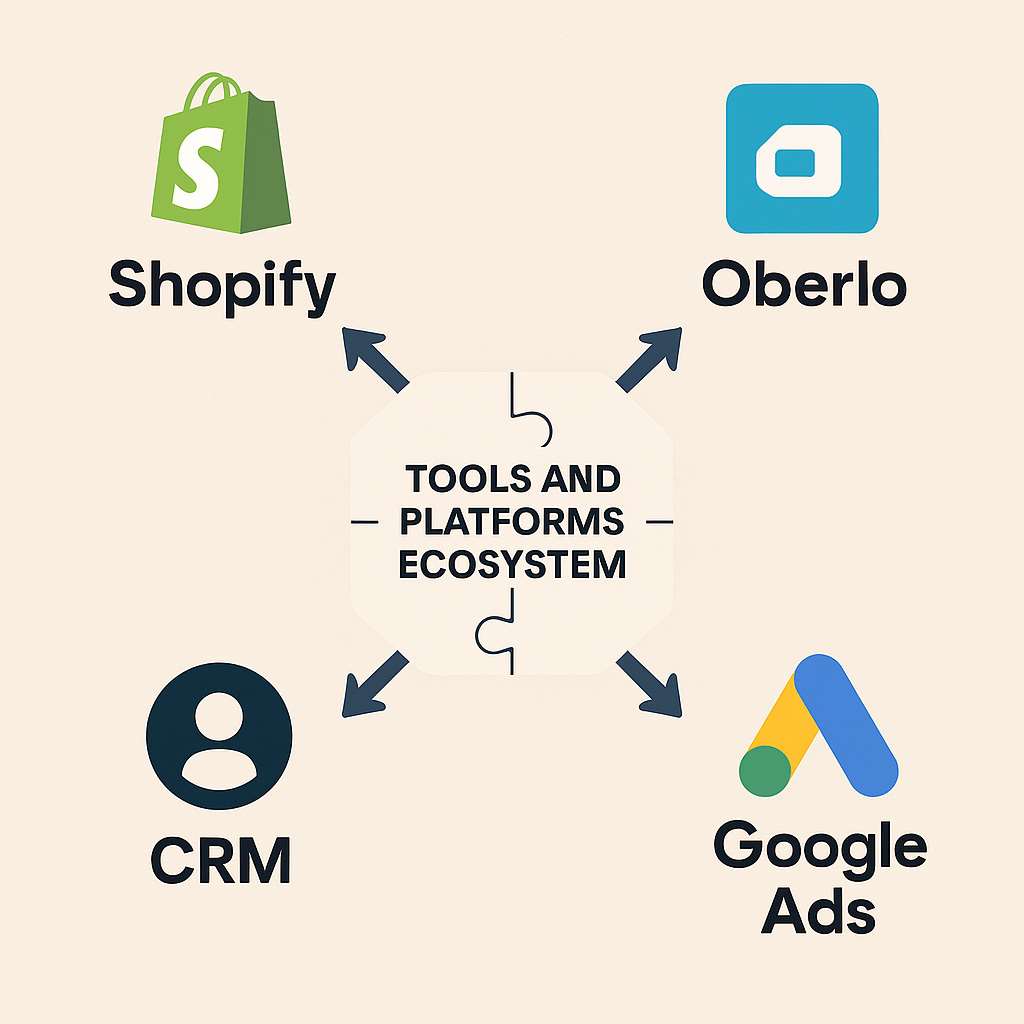
Curious about what tools can enhance your dropshipping venture? Let’s break it down: what tools and platforms are best for dropshipping? The landscape today offers various user-friendly platforms designed specifically for dropshippers. Among the leaders is Shopify, known for its intuitive interface and powerful features tailored for eCommerce.Platforms like Shopify are beginner-friendly—read our Shopify dropshipping setup guide to learn how to start effectively.
Utilizing plugins and apps can amplify your store’s functionality. For instance, tools like Oberlo streamline product importation and inventory management, allowing you to focus on growth. For many beginners, Shopify dropshipping is worth it due to its intuitive interface and powerful automation capabilities. Additionally, customer relationship management (CRM) software can help track engagement and improve customer acquisition in dropshipping.Check out Shopify’s official guide to explore its features and workflows.
Don’t forget about marketing tools to drive traffic and customers to your online store. Google Analytics, for example, helps you refine marketing strategies, while social media ads attract viable target audiences. Keeping an eye on conversion optimization tools ensures you’re maximizing customer engagement on your site.
Here’s a summary of valuable tools and platforms for dropshipping:
| Category | Recommended Tools |
|---|---|
| eCommerce Platforms | Shopify, WooCommerce |
| Inventory Management | Oberlo, Spocket |
| Analytics | Google Analytics, Facebook Insights |
| CRM Systems | HubSpot, Zoho CRM |
| Marketing Solutions | Mailchimp, Hootsuite |
Having the right tools makes it easier to run a successful dropshipping business. By integrating the best platforms, you’ll set yourself up for growth and efficiency.
What Are the Legal Considerations for Dropshipping?
Navigating the legal landscape can be daunting, but it’s crucial for business stability. So, what’s on the radar when we ask: what are the legal considerations for dropshipping? First off, you need to ensure that your business complies with local laws regarding sales taxes. Depending on your jurisdiction, you may be required to collect sales tax from buyers, significantly impacting your pricing structure.
Moreover, maintaining a business license is typically mandatory. Failing to obtain one can lead to fines or disruptions to your operations. You’ll also want to look into import and export regulations, particularly if you’re sourcing products internationally. Delays in shipping can arise if you aren’t aware of the required customs documentation.
Another factor to bear in mind is consumer protection laws. Regulations concerning product returns, refunds, and warranties are essential to ensure your business is ethical and customer-friendly. Keeping clear communication about your returns policy can aid in customer satisfaction and compliance.
Consider these essential legal aspects as you hedge your business against potential pitfalls:
| Legal Aspect | Considerations |
|---|---|
| Sales Tax Compliance | Understanding taxation in your jurisdiction |
| Business Licensing | Acquiring necessary permits to operate legally |
| Import/Export Regulations | Ensuring compliance with customs and tariffs |
| Consumer Protection Laws | Adhering to standards for returns and refunds |
| Clear Communication | Transparency in policies to build customer trust |
Being well-informed about the legalities makes navigating the dropshipping landscape much smoother and helps establish credibility in the market.
What Products Should You Sell in a Dropshipping Business?
When venturing into dropshipping, product selection is paramount. So, let’s dive deeper: what products should you sell in a dropshipping business? To start, it’s essential to evaluate the trends shaping consumer preferences. Niche markets, such as eco-friendly products, have gained momentum as more consumers are inclined to support sustainable options. But what’s the real story behind product choices?
You should engage in market research to pinpoint high-demand categories. Certain niches, such as tech gadgets, pet supplies, and home decor, often yield favorable performance due to their universal appeal. Engaging with current market trends, including popular platforms like TikTok, can also help identify products that are catching fire in popularity.Use Google Trends to identify real-time product popularity by region.
Additionally, building relationships with reliable suppliers is vital. This ensures high-quality products and consistent inventory levels, which can lead to improved customer satisfaction. As competition intensifies, private label dropshipping emerges as a high-margin strategy that offers stronger brand identity and control over product quality. Keep in mind, the initial hours spent on product selection can pay off significantly as your business scales.
| Product Category | Considerations |
|---|---|
| Eco-friendly Products | Consumer demand for sustainability |
| Tech Gadgets | High-interest market segment |
| Pet Supplies | Increasing pet ownership rates |
| Home Decor | Seasonal trends and personalization opportunities |
| Trending TikTok Products | Real-time insights into popular consumer interests |
Ultimately, making informed product choices can attract customers and drive sales, positioning your dropshipping business for success.
How Do You Market a Dropshipping Store Effectively?
Now we arrive at a crucial factor for your business’s long-term success: marketing. So, how do you market a dropshipping store effectively? The landscape is filled with strategies, but the essentials start with understanding your target audience. Identifying your demographic allows for tailored campaigns that resonate deeply.
Social media platforms, particularly Facebook and Instagram, are invaluable for reaching target consumers. Visually appealing advertisements can drive traffic to your online store, but here’s the kicker—consider investing in paid ads to maximize your audience reach. The return on investment can pay dividends when executed correctly.
Email marketing offers another avenue worth exploring. Building a solid subscriber base allows you to engage potential customers directly, offering them promotions and updates on new products. Remember to segment your email lists for optimal targeting.
To illustrate the marketing strategies available, here’s an overview:
| Marketing Strategy | Description |
|---|---|
| Social Media Advertising | Utilize targeted ads to engage with users |
| Influencer Partnerships | Collaborate with influencers for brand visibility |
| Email Campaigns | Direct communication with subscribers for retention |
| SEO Practices | Optimize your website for better search visibility |
| Retargeting Ads | Re-engage users who visited your site but didn’t purchase |
Effective marketing is the lifeblood of your dropshipping business. By taking a multi-channel approach, you can significantly enhance your visibility and, ultimately, your bottom line.
What Are Common Challenges Faced in Dropshipping?
With opportunities come challenges, so let’s plunge into this critical topic: what are common challenges faced in dropshipping? While many are drawn to dropshipping for its simplicity, the model isn’t without its pitfalls. One notable challenge is managing customer expectations. Frustrated buyers due to shipping delays can damage your reputation and lead to increased return rates.One common concern is whether dropshipping is saturated in 2025—and in many niches, it is, which makes product research and branding more important than ever.
Moreover, resolving issues related to supplier reliability can be bothersome. You may encounter instances where suppliers don’t fulfill orders or maintain quality control. To mitigate this risk, establishing strong relationships with reputable suppliers and continuously assessing their performance is key.Partnering with reliable dropshipping suppliers in China reduces fulfillment risks and builds consistency.
Another hurdle often arises in the realm of competition. With lower barriers to entry, many entrepreneurs flock to popular niches. So, how can you stand out? A compelling value proposition and superior customer service can give you an edge.
Here’s a breakdown of common dropshipping challenges:
| Challenge | Solutions |
|---|---|
| Shipping Delays | Set realistic delivery timelines |
| Supplier Reliability | Conduct thorough vetting of supplier partners |
| High Competition | Focus on unique selling propositions |
| Customer Service | Provide timely support and transparent communication |
| Market Saturation | Explore underserved niches for product offerings |
Recognizing and proactively addressing these challenges can prevent many headaches, setting you up for a sustainable and rewarding business.
How Can You Scale Your Dropshipping Business?

Let’s talk about growth—how can you scale your dropshipping business? Once you’ve established a solid foundation, scaling becomes the next logical step. First, focusing on your product range is essential. Expanding into complementary product categories can catapult your revenue.One effective way to grow is to adopt a private label dropshipping strategy that enhances your brand identity and improves margins.
In addition to product expansion, consider leveraging automation tools. Whether it’s automating email follow-ups or using software to manage inventory, streamlining operations will free up your valuable time and enhance efficiency. This is where it gets interesting—automation allows you to handle increased sales volume without sacrificing customer service.
Moreover, consider international dropshipping opportunities if you’ve primarily focused on your local market. Tapping into global markets can unlock new revenue streams. Conduct thorough research to understand local regulations and consumer preferences, ensuring you’re well-prepared to expand.
Here’s how scaling can unfold logically:
| Scaling Strategy | Description |
|---|---|
| Product Expansion | Offer related items to increase average order value |
| Automation Tools | Use software for efficiency in operations |
| Targeting New Markets | Explore international dropshipping opportunities |
| Marketing Optimization | Refine and scale successful ad campaigns |
| Building a Team | Hire virtual assistants or customer service agents |
Scaling takes time and perseverance, but by employing effective strategies, you can ensure sustainable growth and increased profitability.
What Are the Success Stories in Dropshipping?
Success stories can provide powerful motivation, and that leads us to explore: what are the success stories in dropshipping? Many entrepreneurs have found lucrative opportunities through dropshipping, transforming their lives in the process. Success often arises from a keen understanding of market dynamics, consumer trends, and effective branding.
Take the case of Gymshark, which started as a dropshipping company. By leveraging social media and influencer marketing, they built an impressive following and pivoted toward creating their product line. This led to explosive growth in the fitness apparel sector.
Another notable story is that of Oberlo’s founder, who created a platform to streamline the dropshipping process. They demonstrate how recognizing a gap in the market can pave the way to success.
Simply put, the following factors are often present in successful dropshipping stories:
| Success Factor | Examples |
|---|---|
| Market Knowledge | Understanding current trends like sustainable products |
| Strong Branding | Developing a focused brand identity |
| Effective Marketing | Leveraging social media and influencer collaborations |
| Quality Supply Chains | Partnering with reliable suppliers |
| Consistent Engagement | Building a loyal customer base through communication |
These examples illustrate that while the journey may not always be easy, success is possible for those who are committed and strategic.
Is Dropshipping Still a Viable Business Model?
As we reach our final inquiry, it’s essential to evaluate: is dropshipping still a viable business model? The evolving landscape of eCommerce suggests that while traditionally viewed as a low-barrier approach, dropshipping has matured into a highly competitive arena. Still, the dropshipping business model continues to offer flexibility for sellers who can adapt and differentiate their brands.But here’s the kicker—there remains significant potential for those willing to innovate and adapt.
The answer largely depends on how one approaches the business. For those considering is dropshipping worth it long term, understanding market trends and consumer behavior is key. Emerging markets and unique niches can provide untapped opportunities, particularly for entrepreneurs open to experimentation and flexibility.
Moreover, as consumer preferences shift toward sustainable products, there is ample space for dropshippers focusing on eco-friendly products to carve out their niche.
To encapsulate, let’s examine the current perspective on dropshipping viability:
| Viability Factor | Current Outlook |
|---|---|
| Market Trends | Shifting preferences toward eCommerce sustainability |
| Competitive Landscape | Increased competition necessitating unique offerings |
| Innovation Potential | Opportunities in new niches and markets |
| Technology Integration | Advances in technology simplifying operations |
| Flexibility & Adaptability | Essential traits for long-term success |
In conclusion, dropshipping can certainly be a viable option for those willing to stay informed and agile.
FAQ Section
Q1: What is dropshipping?
Dropshipping is a retail fulfillment model where the seller doesn’t keep stock on hand and instead relies on suppliers to ship directly to customers.
Q2: How does dropshipping work?
In dropshipping, a seller lists products on their online store, and when an order is placed, they purchase the item from a supplier who ships it directly to the customer.
Q3: What are the main benefits of dropshipping?
Benefits include low startup costs, flexibility in location, and the ability to scale without holding inventory.
Q4: What are some challenges of running a dropshipping business?
Common challenges include shipping delays, managing customer service, and maintaining product quality from suppliers.
Q5: How can you make a profit in dropshipping?
To make a profit in dropshipping, focus on selecting the right products, optimizing profit margins, and implementing effective marketing strategies.
By taking all these factors into consideration, you can make a more informed decision about whether dropshipping is the right avenue for you to explore in 2025 and beyond.

